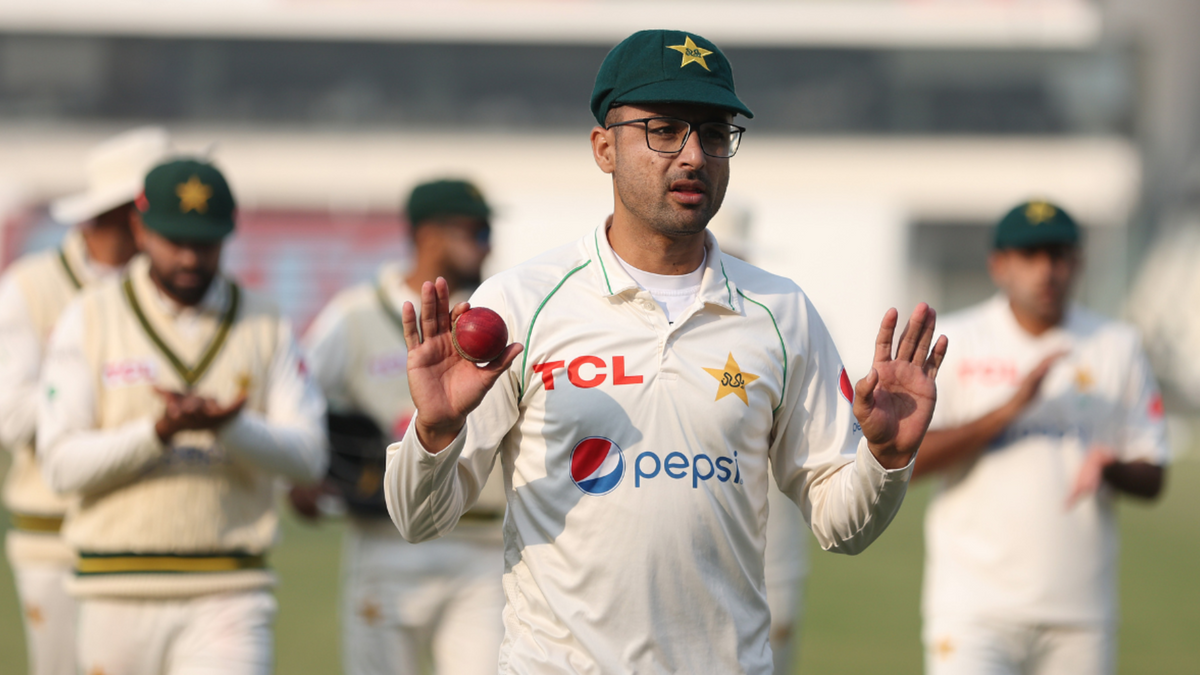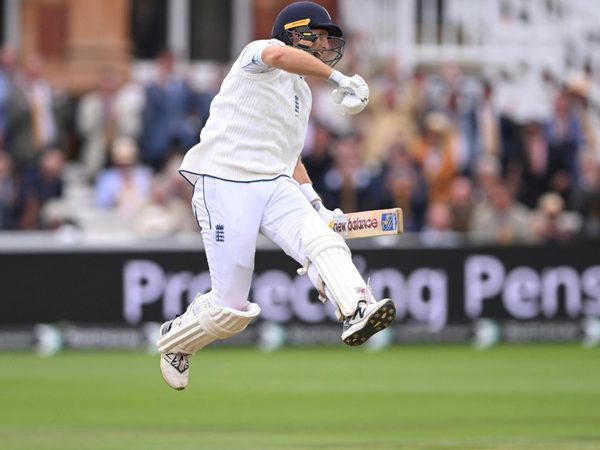
England face a battle to combat Abrar Ahmed after the leg-spinner took seven wickets on Test debut, writes Ben Gardner.
This is English cricket heritage.
These last few months have seen them question everything assumed true about Test cricket, but some things remain immutable, and one of them is that, if there’s a trip to the subcontinent, and an unheard-of mystery spinner, England will find a way to give him all the wickets they have. Mehidy Hasan Miraz and Axar Patel, welcome Abrar Ahmed to the club: five wickets before lunch, seven in all, the third-best figures on debut for Pakistan.
Abrar was exceptional, right from his first over. Zak Crawley failed to follow the country code, left his gate wide open, and the googly found its way through. The wrong’un is Abrar’s main weapon, and the pick of the dismissals came via another. Ben Stokes attempted to defend – even getting him to do that is a moral victory – and still failed to get bat on ball, the stunned look on the England captain’s face telling the tale of how comprehensively he had been beaten. Abrar showed he had the leg-spinner too; Joe Root, England’s best player of the turning ball, was another unable to defend successfully, hit in front by one which pitched on leg and would have hit off.
He hardly looks like a source of the spectacular: bespectacled and spindly, there’s something of the awkward undergraduate about him, and watching him bowl and hearing him speak – through an interpreter – at the end of play, the studious nature comes through. Running off in celebration and with a wide smile, it’s hard not to warm to him.
Pakistan will surely be ruing his absence from the first Test. The preference for Zahid Mehmood, behind Abrar in the queue for his state side, remains baffling, and Saqlain Mushtaq’s explanation that Mehmood had been around the squad longer does little to clear things up. Abrar’s rise has been rapid, but he has earned his stripes, 43 wickets in the Quaid-e-Azam Trophy by a distance the most in the competition. In any case, he might consider himself lucky to be making his bow at Multan rather than in Rawalpindi.
England might also be looking at Abrar’s success and wishing they could turn to their own leggie. Rehan Ahmed shares with Abrar a last name, a preference for the googly, a stump-to-stump line of attack, and a sense of the precocity, and with England bowling just six overs of seam compared to 22 of spin, the balance doesn’t look right. They face a battle to avoid going into the third Test level.
England had their gameplan, and it looks unlikely to change. They attacked, of course, but faced with the first proper turning test of the Bazball era, they opted for a different method, favouring the sweep shot of any kind, from Ollie Pope’s wrong-leg reverse to Jack Leach’s first-ball switch-hit, with varying degrees of success. Three of Abrar’s wickets came via some version of the stroke – Ben Duckett and Will Jacks lbw, and Pope caught at point – and one more was from a piece of aggression, Harry Brook holing out attempting to go down the ground.
There was assistance from the surface, but not as much as Abrar made it seem: according to CricViz, it’s only just in the top-half for the most spin-friendly conditions of the Stokes-McCullum era. And Abrar deserves credit for the wickets from attacking strokes as well as the more conventional dismissals, not just for winning the ‘you miss, I hit’ battle, but for forcing that approach in the first place. Abrar’s threat came from his skill, but also from his mystery, and if you don’t know which way the ball is turning, defending is rarely the best way to go. England would have attacked anyway, but there was little else they could do.
Analysts will say that players arriving on the international stage with their secrets still hidden are few and far between, such is the amount of footage available, with every game from Sindh Under-9s upwards broadcast in some form, but Abrar is one such rarity. Ben Duckett confirmed at stumps that there was only limited footage of him, mostly gleaned from his efforts in the nets during the series. Abrar has played just 14 first-class games, and while Pakistan’s Quaid-e-Azam Trophy coverage is exceptional, it’s not quite good enough to spot a tell in a variation bowler’s release. He has played just four Pakistan Super League games, and while he was in the squad for the England T20Is, this is his debut in any format. Watching England attempt to figure him out in real time will prove fascinating.
Stokes and Co. now face a race to crack the code, and Abrar the challenge of staying ahead in a world which will quickly know all about him. By lunch, the mystery was already being decoded, Mark Butcher and Stuart Broad spotting a little finger raised here, the ball a bit deeper in the hand there. Is he a wrist-spinner, a finger-spinner, or some combination? Soon, all will be laid bare.
But it’s one thing knowing what’s coming at you; it’s quite another playing it when it gets down there. The early evidence is that Abrar is that special combination of the mystique to make a splash, and the mastery to stay the course.








